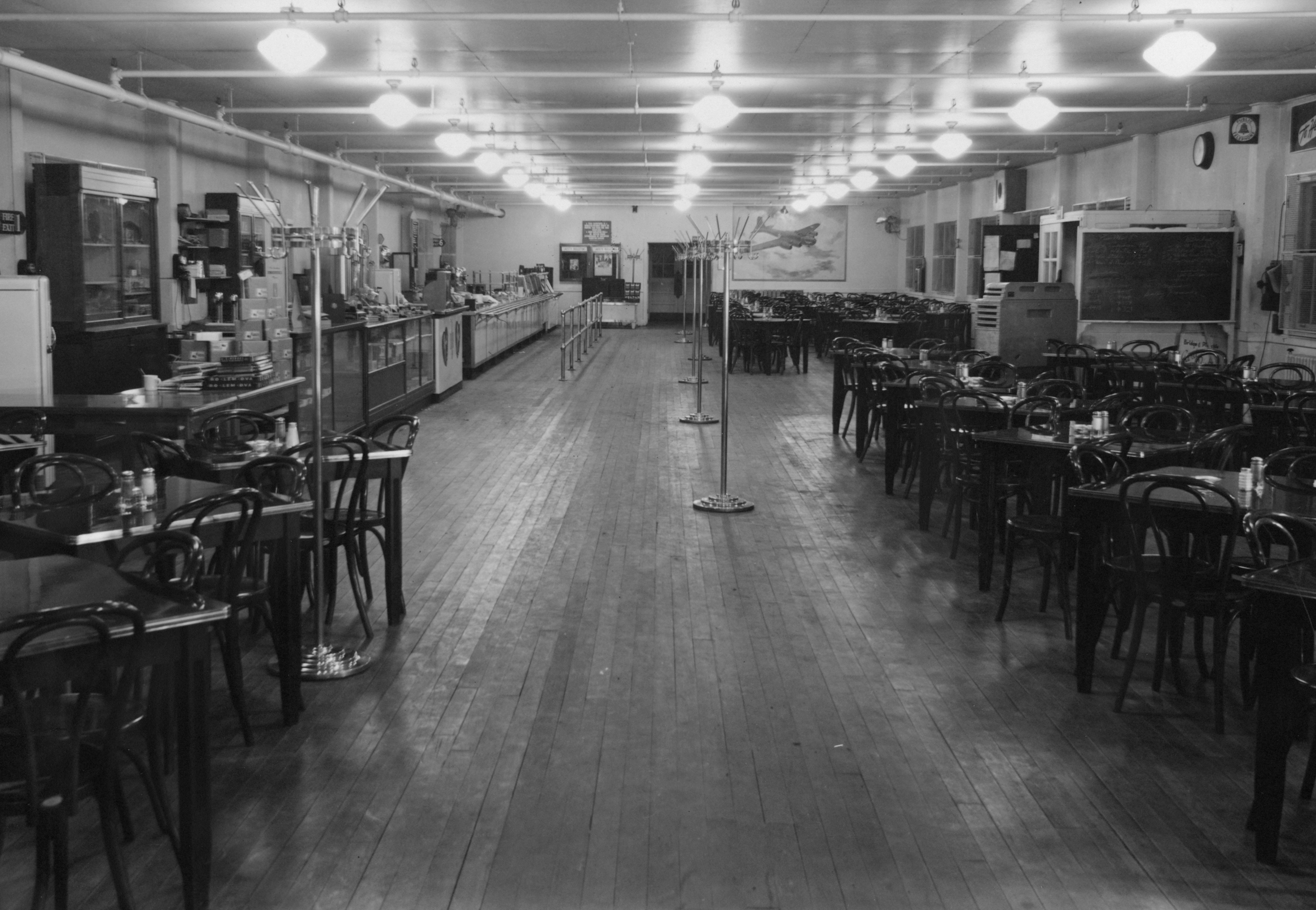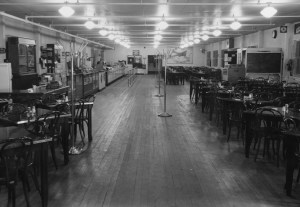
PCafeteria at the Plum Brook Ordnance Works
Cafeteria in the Plum Brook Ordnance Works’ Administration Building in Sandusky, Ohio. The facility later became the NASA Glenn Research Center’s Plum Brook Station. During World War II the ordnance works produced trinitroluene (TNT), dinitrotoluene (DNT), and pentolite which were crated and shipped to the Ravenna Arsenal in Ravenna, Ohio. There, the explosives were packed into shells and sent to Allied forces overseas. Plum Brook was the third largest producer of TNT during World War II. The plant was operated by the Trojan Powder Company of Allentown, Pennsylvania. The ordnance works, which employed thousands of people during the war, was like a small town. The cafeteria, seen in this photograph, was in the basement of the Administration Building near the main gate. A painting of the Plum Brook Trojanair appears on the far wall. The B-17 Flying Fortress was reputed to be built with war bonds purchased by Plum Brook Ordnance Works employees during a March 1942 bond drive. A staff artist painted a mural of the aircraft in flight on the wall of the cafeteria. The Plum Brook Ordnance Works was shut down immediately after the war and remained vacant for the next ten years. NASA’s predecessor, the National Advisory Committee for Aeronautics (NACA), acquired the 500 acres of the site in 1955 to build a nuclear test reactor. By 1963, the agency had acquired the entire 9000 acres from the Army. Almost all of the military facilities were removed in the early 1960s. Plum Brook Station contained over 30 test facilities at its peak in the late 1960s. Today there are four major facilities in operation.
- X
























